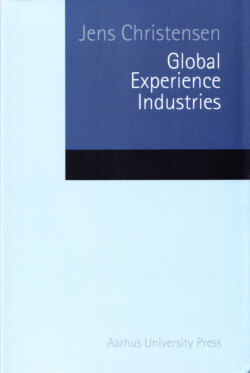Читать книгу Global Experience Industries - Jens Christensen - Страница 17
На сайте Литреса книга снята с продажи.
The Age of Mass Tourism
ОглавлениеMass tourism is an offspring of the era of mass production and mass consumption, based on economies of scale.10 Economies of scale are a certain rational way of organizing business and any organizational activity for that matter that dominated throughout most of the 20th century. Often this organizational mode is called Fordism or just bureaucracy, indicating on the one hand a radical low cost and standardized way of production and on the other hand a sharp division of labor and authority. The attractive side of this system was that it drew people out of the poverty that ruled everywhere before c.1900 and gave the majority of Western people access to consumer goods that were inaccessible to previous generations, including upgraded housing, clothing, food, health care and education. Everything has a price, and in this case it was a thorough standardization of products and ways of life in general. During the first half of the 20th century, this system expanded slowly. The unleashing of the potentials of Fordism and governmental regulations in the early post-war decades created, however, a welfare society that had never been experienced before.
Relaxed international trade restrictions in the Western world as well as the systematic application of science and technology and governmental intervention to secure over-all welfare, caused rapid changes in many aspects of post-war Western societies. Being born under the modest pre-1950 life conditions, the early post-war generation eagerly grabbed the huge consumption opportunities of affluent societies. That everything was standardized and everybody treated uniformly did not bother this first post-war generation, because to them affluence came as a revelation and was Paradise on Earth. Furthermore, they were not used to international travels and therefore preferred the comfort and security of package tours. Their children, on the other hand, took welfare for granted and during the 1960s and 1970s, they began to protest against the uniform, authoritative and materialistic nature of modern societies. In addition, a continuous economic crisis of the 1970s and 1980s indicated that the era of Fordism had exhausted its potentials and called for radical reforms. But until c.1990, the fundaments of mass production and consumption remained unchanged and dominated the practice of business, governments and consumption behavior.
On this background, modern mass tourism started in the 1950s and broke through during the 1960s and 1970s.11 The age of mass tourism lies between 1960 and 1990. Package tour operators transported millions of charter tourists from cold Northern Europe to warm Southern Europe. Along the Mediterranean coastline, the pale northerners allowed the sun to tan their skin, giving them a welcome break from a dull everyday and working life. Spain, especially, became a cheap and popular destination, followed by Greece. In the US, people frequented the Atlantic and Pacific coasts, as well as the Caribbean and Hawaii.
Mass tourism stemmed from the following factors:
- The post-war economic boom and wealth
- Still longer vacations, particularly in Western Europe
- Growing international trade
- The revolutionary development of air transportation, the building of numerous airports, communication and computer systems, regular and fast domestic and international routes in the US, Western Europe, across the Atlantic and eventually around the world
- The airlines’ establishment of computerized reservation systems and cheap group tickets for charter trips
- The general distribution of cars
- The establishment of international hotel chains
- The development of a large package-tour industry, taking care of transportation and accommodation for millions of people.
The main actors of the post-war tourism industry were airlines, hotel chains and package-tour companies. Railways, passenger ships and bus firms, electronic cards and car rent companies as well as restaurants and attractions were secondary parties in the large mass tourism industry. Without modern airlines and car industries, the new basic infrastructure and computer technology and the natural and cultural attractions of destination countries, modern mass tourism would not have existed. Except for the European package tour operators, American companies took the lead in all other fields of the international tourism industry.
